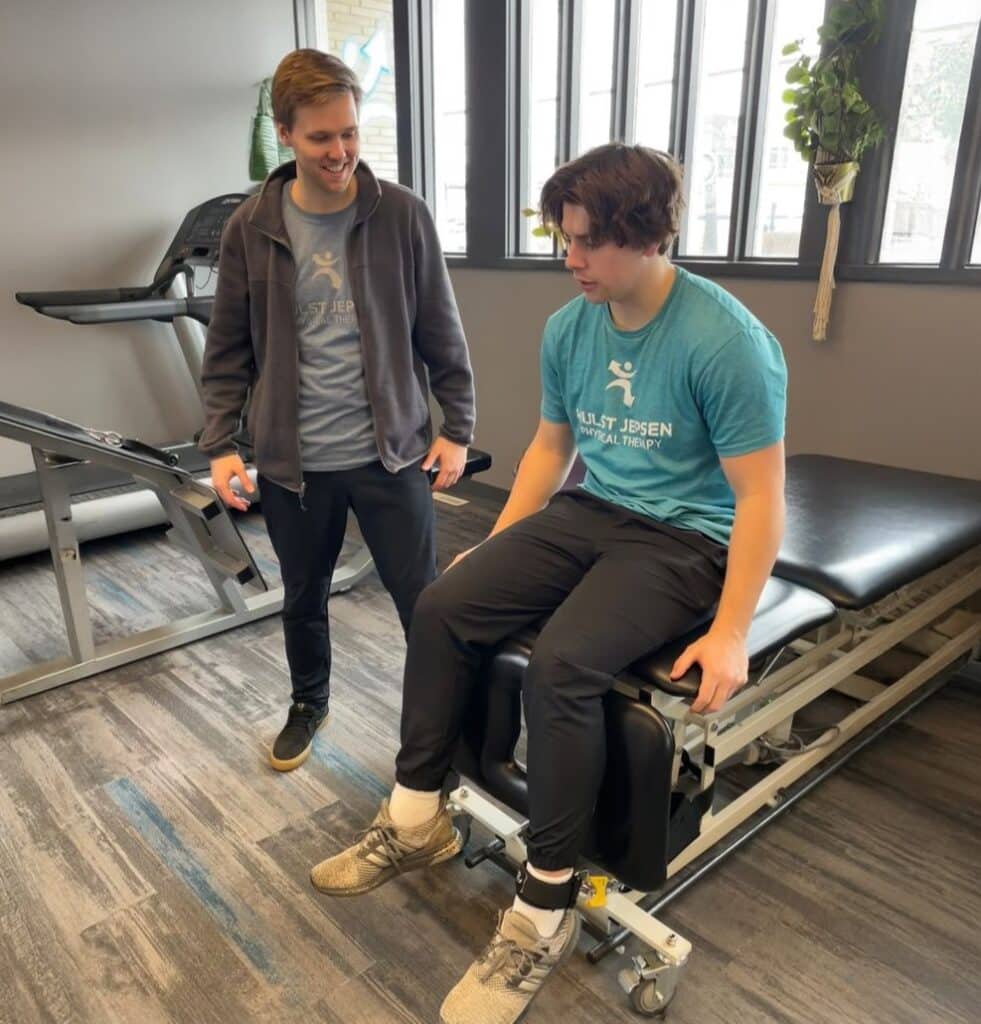How to Safely Begin or Return to Running at Any Age

Running is a rewarding form of exercise at any age, and it’s never too late to start or return. Whether you’re in your 20s or 60s, with the right approach and some patience, you can gradually build tolerance and safely return to running. This guide outlines evidence-based practices for returning to running, the importance of strength, and how Hulst Jepsen Physical Therapy can support you every step of the way.
1. The Importance of Gradual Return to Running
The key to avoiding injury and ensuring long-term success is gradual adaptation. This means starting slow, allowing your body to adjust, and gradually increasing intensity. The walk/run method is one of the safest ways to do this, ideal for anyone returning after a break or recovering from injury.
Research Supporting Graded Exposure
Studies show that gradually increasing the intensity, such as alternating walking and running intervals, reduces the risk of injury. A systematic review found that this method is far safer than jumping into full-speed running (Van Gent et al., 2007). For example, start with 10 seconds of running and 50 seconds of walking, then increase the running portion over time as your body adapts.
Adapting Over Time
Your ability to adapt to running will vary based on age, fitness level, and experience. But with consistent, gradual training, people of all ages can improve. Older adults, in particular, can benefit from this gradual return to running, minimizing injury risk while improving endurance and overall function.
2. The Role of Strength in Returning to Running
Building strength is vital for preventing injury, especially the muscles that support your lower body. Quadriceps strength is crucial for running, as your quads control the knee during the stance phase, where your body absorbs impact. Weak quadriceps can increase your risk of knee injuries, such as patellar tendinopathy.
Evidence on Strength Requirements for Running
Research suggests that before returning to running, you should aim for a quadriceps strength-to-bodyweight ratio of at least 1.45:1 before beginning your return to running (Iwame et al., 2021). This means your quadriceps should be roughly 1.45 times your body weight in strength to handle running’s repetitive forces. For optimal performance, aim for a ratio of >2.2 times bodyweight for women and >2.5 times bodyweight for men.
Strengthening your muscles through exercises will ensure you’re ready to run safely and effectively.
3. How Hulst Jepsen Physical Therapy Uses the Tindeq Progressor 200
 At Hulst Jepsen Physical Therapy, we use a personalized approach to assess whether you’re ready to return to running. A key tool in this process is the Tindeq Progressor 200 Dynamometer, which accurately measures your quadriceps strength.
At Hulst Jepsen Physical Therapy, we use a personalized approach to assess whether you’re ready to return to running. A key tool in this process is the Tindeq Progressor 200 Dynamometer, which accurately measures your quadriceps strength.
By using the Tindeq Progressor, we can assess whether your quadriceps strength is sufficient for running. This tool helps us track your progress and ensures your muscles are strong enough to handle running’s demands. Without adequate strength, running can be risky, especially after injury or a break. The Tindeq Progressor helps ensure you’re ready to run safely and effectively for the long term.
4. Evidence: Running is Possible for All Ages
If you think running is only for younger people, think again! Research shows that older adults—even those who have been sedentary—can safely return to running. A study of men and women aged 40–75 years who participated in a 12-month moderate-to-vigorous aerobic exercise program (including walking and running) found no significant difference in injuries between those who exercised and those who remained sedentary. In fact, the exercise group reported less bodily pain over time, showing that regular movement improves overall well-being. Whether you’re just starting or returning after a break, running is achievable at any age. With the right approach, you’ll not only reduce pain but also improve your fitness and quality of life.
Conclusion
Running can be a lifelong activity, and with the right approach, you can safely return to it at any age. Gradually increasing your running intervals, strengthening key muscles like your quadriceps, and leveraging tools like the Tindeq Progressor 200 to ensure proper strength will minimize injury risk and allow you to enjoy running for years to come.
At Hulst Jepsen Physical Therapy, we specialize in guiding individuals through the process of returning to running safely. Whether you’re starting or coming back after an injury, we’re here to support you every step of the way.
Ready to start your running journey? Contact Hulst Jepsen Physical Therapy by calling (616) 256-8679 or reach out to any one of our clinics to schedule an appointment for a personalized assessment. We’ll help you build strength, improve mobility, and return to running safely and confidently!
Sources:
- Van Gent RN, Siem D, Tol JL, et al. Incidence and determinants of lower extremity running injuries in long distance runners: a systematic review. Br J Sports Med. 2007;41(8):469-480.
- Iwame T, Matsuura T, Okahisa T, et al. Quadriceps strength to body weight ratio is a significant indicator for initiating jogging after anterior cruciate ligament reconstruction. The Knee. 2021;28:240-246.
- Campbell KL, Foster-Schubert K, Xiao L, et al. Injuries in sedentary individuals enrolled in a 12-month, randomized, controlled, exercise trial. J Phys Act Health. 2012;9(2):198-207. doi:10.1123/jpah.9.2.198.
